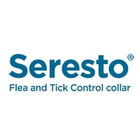
Yes, apples are generally safe for dogs and can be a healthy addition to their diet when fed in moderation. This crunchy fruit is packed with vitamins, minerals, and fiber, making it a nutritious snack that most dogs enjoy. However, like all human foods, apples should be served correctly — without seeds, core, or stems — to keep your furry friend safe.
In this article, we’ll explore the benefits of apples for dogs, possible risks, and the right way to feed them to ensure your pet stays happy and healthy.
🥕 Nutritional Benefits of Apples for Dogs
Apples are low in fat and calories, making them a great choice for dogs, especially those who are overweight or on a restricted diet. Here’s why apples can be good for your pet:
Rich in Vitamins A and C:
- Vitamin A helps support eye health, skin, and coat condition.
- Vitamin C boosts your dog’s immune system and acts as an antioxidant.
Good Source of Fiber:
Apples contain dietary fiber, which helps regulate your dog’s digestion and maintain a healthy gut.
Low in Fat and Calories:
Perfect for dogs who need a light treat option. A few apple slices can satisfy their craving without adding extra pounds.
Freshens Breath:
The crisp texture of apples can help clean your dog’s teeth naturally and reduce mild bad breath.
Hydration Boost:
Because apples contain roughly 85% water, they can help keep your dog refreshed and hydrated, particularly during warm weather.
⚠️ Risks of Feeding Apples to Dogs
While apples are healthy, there are a few things to watch out for before offering them to your pet.
Remove Seeds and Core:
Apple seeds contain a compound called amygdalin, which can produce cyanide when broken down in the body. While just a few seeds might not be dangerous, it’s best to remove them entirely. The apple core is also hard and can become a choking risk, particularly for smaller dogs.
Avoid Rotten or Moldy Apples:
Spoiled apples can contain ethanol (alcohol produced during fermentation), which is toxic to dogs.
Watch the Quantity:
Too many apples can lead to digestive upset, including gas, bloating, or diarrhea, due to their natural sugars and fiber.
Although rare, some dogs might show signs of food allergies such as itching, swelling, or vomiting. If this happens, stop feeding apples and consult your vet immediately.
🍎 Safe Ways to Give Apples to Your Dog
Feeding apples to dogs is simple — but it’s essential to do it right. Here’s how:
Wash Thoroughly:
Rinse the apple properly to remove any pesticides or wax coating.
Remove Core, Seeds, and Stem:
Cut the apple into bite-sized pieces or thin slices to prevent choking.
Start Small:
Introduce apples slowly into your dog’s diet to see how they respond. A few small slices are enough for now.
Serve as a Treat, Not a Meal:
Apples should make up less than 10% of your dog’s daily calorie intake. Treats should never replace a balanced diet.
Freeze for a Refreshing Snack:
Chilled apple slices are a perfect summertime snack and can help ease teething discomfort in puppies.
Mix It Up:
You can add apple pieces to your dog’s meal or mix them with plain yogurt or peanut butter for a delicious snack.
🐶 How Much Apple Can Dogs Eat?
Here’s a quick guide based on your dog’s size:
- Small dogs (under 10 kg): 1–2 slices
- Medium dogs (10–25 kg): 2–4 slices
- Large dogs (25 kg and above): 4–6 slices
Remember, moderation is key. Feeding too much fruit can cause sugar-related issues or digestive problems.
🚫 When Not to Feed Apples to Your Dog
Avoid giving apples to your dog if:
- They have diabetes, as apples are naturally high in sugar.
- They suffer from digestive issues, such as colitis or a sensitive stomach.
- They are on a special vet-prescribed diet, unless your vet approves.
Always consult your veterinarian before introducing new foods to your dog’s diet, especially if they have any existing medical conditions.
🧁 Fun Apple Treat Ideas for Dogs
If your pup loves apples, you can use them to create healthy homemade treats. Here are a few easy ideas:
Apple & Peanut Butter Bites:
Slice apples thinly and spread a bit of unsalted, xylitol-free peanut butter on top.
Frozen Apple Cubes:
Mix fresh apple pieces with unsweetened yogurt, pour the mixture into an ice cube tray, and freeze it to create a refreshing, dog-friendly snack.
Baked Apple Chips:
Slice apples thinly and bake them at low heat for a crunchy, dog-safe snack.
✅ Conclusion: Apples Make a Healthy, Occasional Treat
Apples are one of the best human foods that dogs can enjoy in moderation. They’re crunchy, sweet, and full of vitamins that support your dog’s health — but make sure to remove the seeds and core before serving. As with any treat, balance and portion control are key.
Offering apples to your dog the right way gives them a delicious treat packed with nutrients that support their overall health and happiness.






